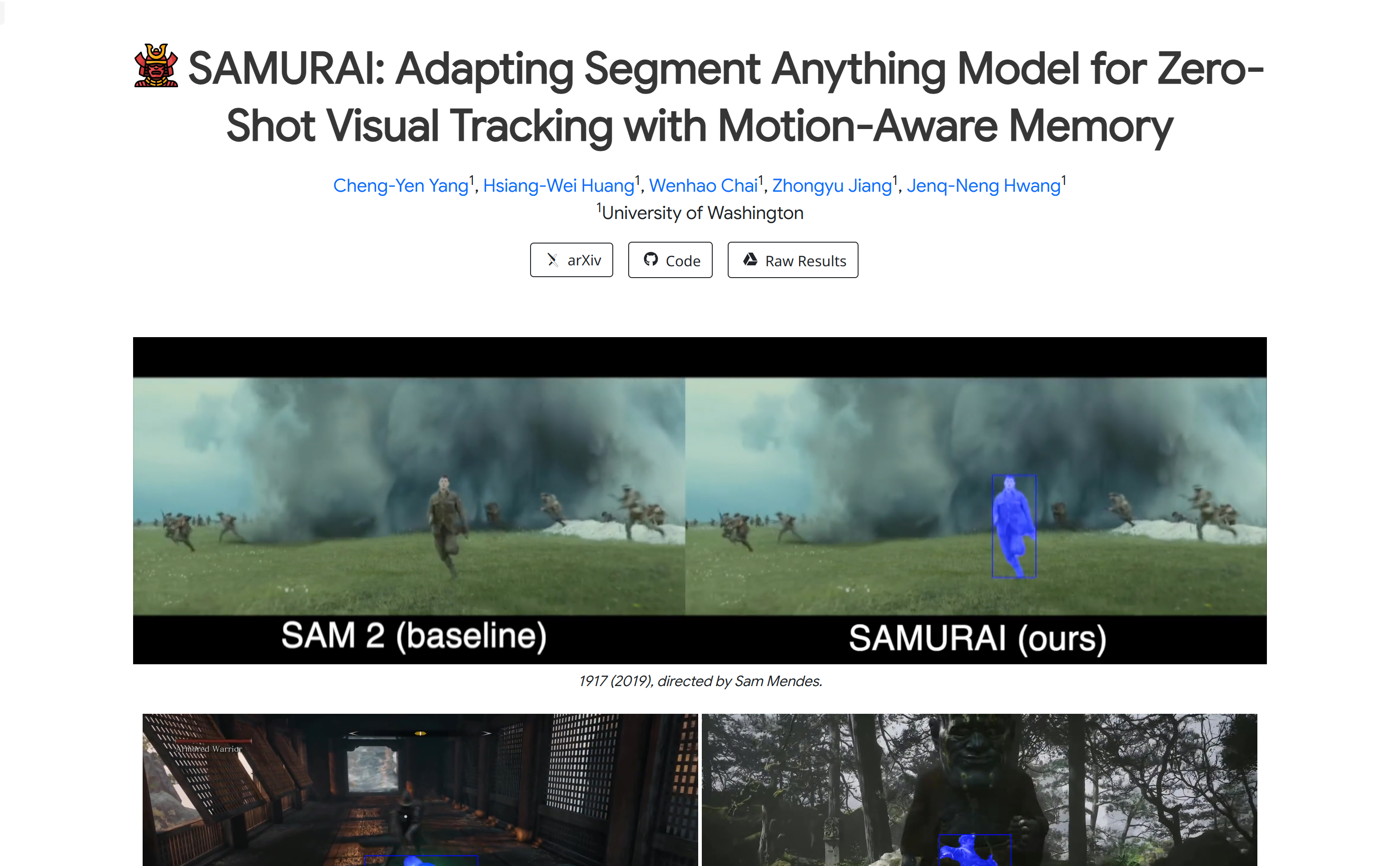

SAMURAI
Overview :
SAMURAI is a visual object tracking model based on the Segment Anything Model 2 (SAM 2), specifically designed to handle the visual tracking task of fast-moving or self-occluding objects. It effectively predicts object motion and optimizes mask selection by introducing temporal motion cues and a motion-aware memory selection mechanism, achieving robust and accurate tracking without the need for retraining or fine-tuning. SAMURAI operates in real-time environments and demonstrates strong zero-shot performance across multiple benchmark datasets, proving its generalization capability without the need for fine-tuning. In evaluations, SAMURAI showed significant improvements in success rate and accuracy compared to existing trackers, with a 7.1% AUC increase on LaSOT-ext and a 3.5% AO increase on GOT-10k. Furthermore, compared to fully supervised methods on LaSOT, SAMURAI demonstrates competitive results, underscoring its robustness in complex tracking scenarios and potential practical value in dynamic environments.
Target Users :
The target audience for SAMURAI includes computer vision researchers, developers of video surveillance systems, engineers working on autonomous driving technologies, and any industry requiring high-precision visual tracking techniques. These users can leverage SAMURAI to achieve efficient object tracking without the need for extensive training data, especially in dynamic and complex visual environments.
Use Cases
Real-time tracking of athletes' movements during sporting events.
Tracking suspicious individuals or vehicles in video surveillance systems.
Tracking surrounding moving objects in autonomous vehicles to avoid collisions.
Features
- Zero-shot visual tracking: Performs visual tracking across various datasets without training.
- Motion-aware memory selection: Optimizes mask selection through motion cues, enhancing tracking accuracy.
- Real-time performance: Capable of handling visual tracking tasks in real-time environments.
- Generalization capability: Can track across different datasets without fine-tuning.
- High success rate and accuracy: Outperforms existing trackers in multiple benchmark tests.
- Robustness: Maintains stable tracking performance in complex and dynamic environments.
- No retraining or fine-tuning required: Simplifies model deployment and application processes.
How to Use
1. Visit the official SAMURAI website to acquire the model and associated code.
2. Read the documentation to understand the input/output requirements and configuration parameters of the model.
3. Prepare the video or image sequence that needs to be tracked.
4. Follow the documentation guidelines to input the video or image sequence into the SAMURAI model.
5. Observe and analyze the tracking results output by SAMURAI.
6. Adjust the model parameters as needed to optimize tracking performance.
7. Integrate SAMURAI into practical applications such as surveillance systems or autonomous driving technologies.
Featured AI Tools
Chinese Picks

Douyin Jicuo
Jicuo Workspace is an all-in-one intelligent creative production and management platform. It integrates various creative tools like video, text, and live streaming creation. Through the power of AI, it can significantly increase creative efficiency. Key features and advantages include:
1. **Video Creation:** Built-in AI video creation tools support intelligent scripting, digital human characters, and one-click video generation, allowing for the rapid creation of high-quality video content.
2. **Text Creation:** Provides intelligent text and product image generation tools, enabling the quick production of WeChat articles, product details, and other text-based content.
3. **Live Streaming Creation:** Supports AI-powered live streaming backgrounds and scripts, making it easy to create live streaming content for platforms like Douyin and Kuaishou. Jicuo is positioned as a creative assistant for newcomers and creative professionals, providing comprehensive creative production services at a reasonable price.
AI design tools
105.1M
English Picks

Pika
Pika is a video production platform where users can upload their creative ideas, and Pika will automatically generate corresponding videos. Its main features include: support for various creative idea inputs (text, sketches, audio), professional video effects, and a simple and user-friendly interface. The platform operates on a free trial model, targeting creatives and video enthusiasts.
Video Production
17.6M















